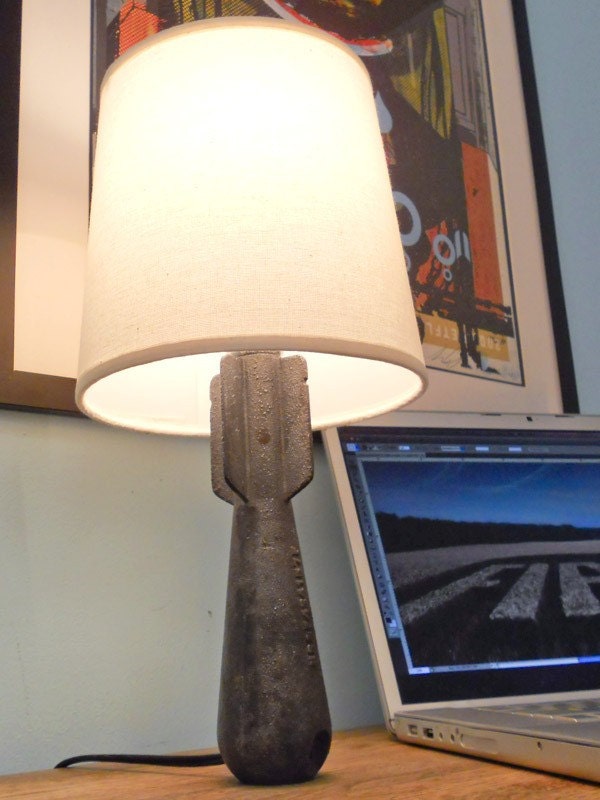Stockpile started with a bomb. Specifically, a bomb's tail-section, which I bought on eBay during a late-night browsing session. By the time it arrived, I had nearly forgotten about it, and was concerned that my name had suddenly been added to watch-lists all over the country. It was rusty, and filthy, and those parts which weren't rusty or filthy were covered with stiff, chipped paint. I realized why the military hadn't wanted to keep it, and why the second owner didn't either - it was junk.
The shape of it was beautiful, though: sheet metal bent into aerodynamic curves, with squared-off fins flowing from the back. And I realized - it could make a great lamp. I coated it with paint remover, which made a tarry mess but exposed gleaming steel underneath. The rust came off under an electric sander, revealing gorgeous patina of black pitting and tiny dents. After a few hours of steel wool and polish, it was clean, and the last thing anyone would call it was "junk."
A few months later came Stockpile. I take military junk: surplus that's been gathering rust, bombshells from planes that haven't flown in sixty years, cases for equipment that's been obsolete for a generation. Then I figure out how it could be beautiful, and what it should do once it is. I'll be selling the designs on Etsy and (soon) in local stores in New York City. Works in progress and updates will be posted here, along with design concepts and public sale announcements.











 The Blitz lamps are my first product on Etsy. I make them from practice bombs left over from WWII. They've been sitting in a leaky warehouse for 65 years, so when I get them they're basically heavy chunks of rust. The original (which is up for sale) was cleaned entirely by hand, which leaves a cool patina on the bomb, but also leaves a cool patina on my hands, on my sink, inside my lungs, etc. A second set is halfway done, and these were cleaned with electrolysis. This involves running high-amperage current through a container filled with alkaline water, using a setup which looks like the Unabomber's dishwasher. (There are a number of incredibly helpful articles about doing electrolysis at home, but
The Blitz lamps are my first product on Etsy. I make them from practice bombs left over from WWII. They've been sitting in a leaky warehouse for 65 years, so when I get them they're basically heavy chunks of rust. The original (which is up for sale) was cleaned entirely by hand, which leaves a cool patina on the bomb, but also leaves a cool patina on my hands, on my sink, inside my lungs, etc. A second set is halfway done, and these were cleaned with electrolysis. This involves running high-amperage current through a container filled with alkaline water, using a setup which looks like the Unabomber's dishwasher. (There are a number of incredibly helpful articles about doing electrolysis at home, but 